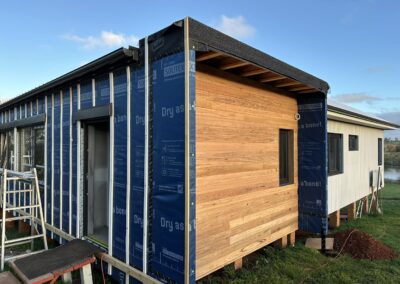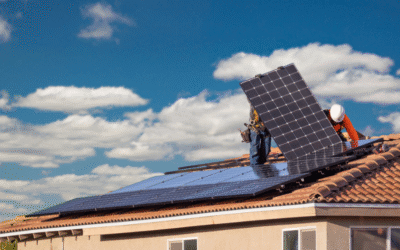Whether renovating or building a new house, sustainability should be paramount. Designing a home that stays warm in winter and cool in summer without putting additional stress on traditional heating or cooling systems is becoming more important than ever.
This is where the common-sense Passive House theory comes into its own. ‘Passivhaus’ originated in Germany in the 1980s, as an approach to building more efficient, healthier and sustainable housing. It works with the natural environment, rather than relying on external systems.
In August, the Electrify2800 group headed to Shiralee to check out Ceri and Mark’s fantastic project of transforming a 1940s home on their property into a certified Passivhaus. All windows and doors are triple glazed, appropriate insulation is being installed, and the building is thermosealed to boost thermal efficiency. Plus the house is oriented so that the busiest parts benefit most from the northern sun.
This is all made possible thanks to local builder Steve from Paradigm Passive Haus. He has a few renovation builds about Orange, with a few new builds planned too.
According to Steve, his five key elements are:
- Quality glazing, triple glazed windows and doors
- Thermal efficiency, being up to 90% more efficient than a typical Australian home (cooling and heating)
- Air tightness – an airtight building is one that has been designed and constructed to minimise the uncontrolled movement of air through the walls, roof, floor and joinery; airtightness can be measured and this provides an indication of the quality and likely future performance of the building
- Continuous insulation to keep the house warm during winter and heat out during summer
- Ventilation, using a mechanical ventilation system to exchange indoor and outdoor air while minimising the energy required to maintain comfortable indoor temperatures.
It’s exciting to see all the innovative ways locals are taking action to live more sustainably and play their part in addressing climate change, while reducing their energy demand and costs, and making their homes more liveable and comfortable.
There are many ways to take practical climate action in your home. like switching from fossil gas to the brilliant, efficient experience of induction cooking, making plans to replace legacy technology like gas hot water or petrol vehicles with efficient, clean electric alternatives, or looking at ways to retrofit and renovate for sustainability and energy efficiency.












0 Comments